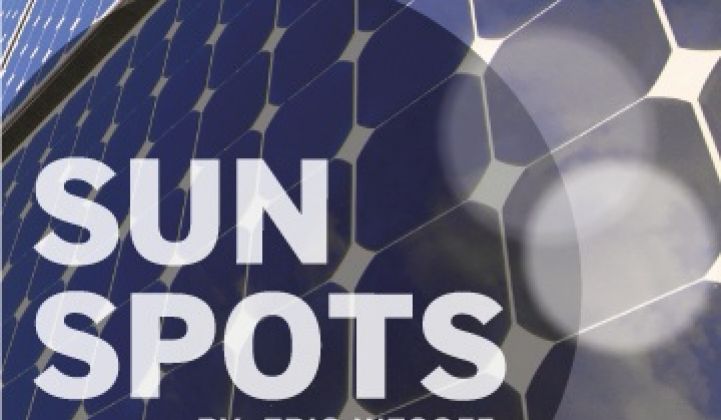SoloPower, a San Jose, California-based maker of CIGS-based flexible thin film solar modules built with a roll-to-roll electrodeposition process, just announced that it won a $197 million loan guarantee from the U.S. Department of Energy’s Loan Program. The cash is meant to support the construction of three factories with a total annual capacity of 400 megawatts of solar modules.
The company claims that the facilities -- one in San Jose and two in Portland, Oregon -- will create 450 permanent jobs and 270 construction jobs.
SoloPower is targeting the commercial and industrial flat-roof market with applications that favor a lightweight, non-penetrating flexible solar solution. The SoloPower panel can be rolled up and walked on.
SoloPower would appear to be going after the same rooftop market as Ascent Solar's JV partner ECD and Global Solar, except they're doing it with a more efficient product. SoloPower modules boast an efficiency of greater than 10 percent and modules have come off the line with efficiencies greater than 12 percent. Compare that to ECD, which ranks somewhere in the 6.5 percent range. Tim Harris, SoloPower's CEO, expects to improve upon SoloPower's efficiency numbers in the coming quarters. The flexible units can be affixed to the roof with an adhesive or mounted on a lightweight non-penetrating rack.
The company claims that lighter weight makes installation easier and reduces the cost of balance-of-system components. Certainly, it can eliminate the cost of racking, which adds about $0.25 per watt.
But why bother messing with flexible designs when the price of conventional crystalline silicon continues to plummet along with the costs of balance-of-system components? And does lighter weight really provide any value?
One of the expensive parts of building a flexible CIGS module is the necessity and cost of an advanced encapsulant to protect the module and keep water out. That component remains a dangerously high-cost piece of the flexible CIGS puzzle.
As for the weight issue, famed and fanatical commenter "ECD Fan" has repeatedly said: "Stop perpetuating the myths that somehow there are roofs in the United States that cannot withstand glass solar panels on non-penetrating racks (a total of less than 5 psf extra dead load)," adding, "Each and every commercial roof in the developed world can withstand the extra 3 to 5 psf dead load required to support a glass panel PV installation."
Flexible module vendors refer to "value engineered" roofs that cannot tolerate large loads.
I interviewed the firm last year and the CEO told me that capex is "way under a dollar" and production cost is "competitive," which means it's too early to know -- or too high to mention.
Here's the list of successful, profitable flexible rooftop solar companies:
1.
2.
3.
A Department of Energy spokesperson recently gave me this comment: “The goal of the Department’s loan guarantee program is to fund innovative, clean energy technologies at scale that would otherwise have a difficult time finding funding in the private markets, while also creating jobs in communities around the country. To date, the loan program has committed to or finalized more than $30 billion in loan guarantees for 29 clean energy projects which have created or saved over 62,000 jobs. The program does not distinguish between technologies, instead focusing on an “all-of-the-above” approach that has resulted in investments in an array of energy sectors including solar, wind, geothermal, transmission, energy storage, energy efficiency, biofuels, nuclear, and advanced technology vehicles.”
I'd like to trust the due diligence performed by the DOE loan program. I know several of the team members and they are knowledgeable technologists and business people.
Henry Sokolski, executive director of the Nonproliferation Policy Education Center, said in a recent webinar, "The capacity of this country to waste money cannot be underestimated." Hard to argue with Sokolski on that.
The lead investor in SoloPower is Hudson Clean Energy Partners, along with Crosslink Capital, Convexa, and Firsthand.



